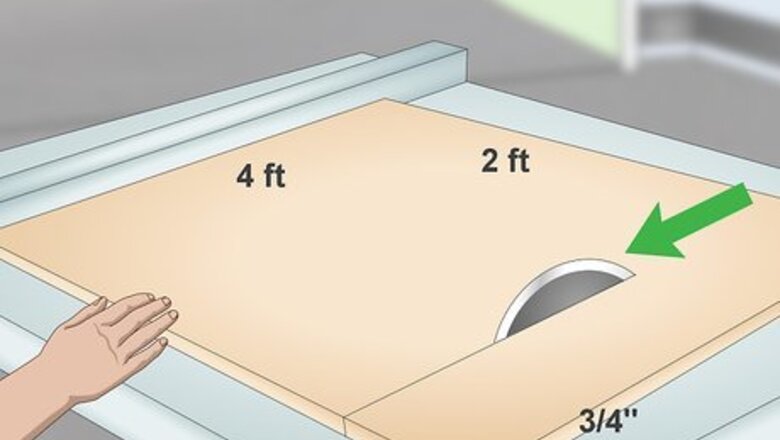
views
Constructing the Table
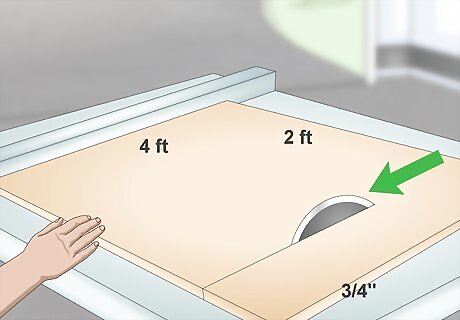
Cut a sheet of ⁄4 in (1.9 cm) plywood to 2 ft × 4 ft (0.61 m × 1.22 m). Use a straightedge and a pencil to make the lines you'll along. Push the board slowly through the table saw to make a straight, even cut. If you want to ensure you're cutting a straight line, use a guide along one side of the plywood. If you use plywood any thinner than ⁄4 in (1.9 cm), it will not be able to support the weight of the router. The size of the plywood can be increased or decreased depending on how much tabletop space you want.
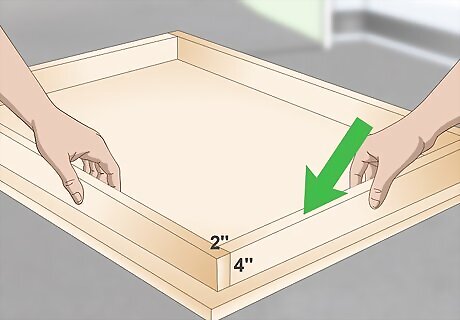
Make a rectangular frame with 2 in × 4 in (5.1 cm × 10.2 cm) boards. Cut 2 boards so they are 17 in (43 cm) long and another pair of boards to a length of 45 in (110 cm) long. Arrange the boards into a rectangle so the shorter boards fit between the longer ones. Set the frame so it is 1 ⁄2 in (3.8 cm) from the edges of the tabletop.
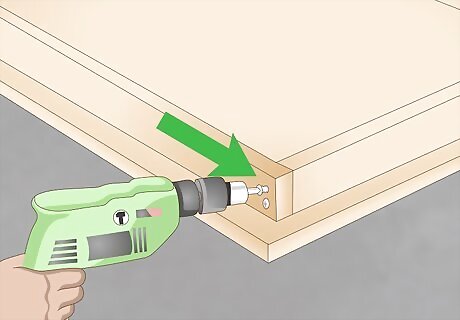
Connect the ends of the frame boards using wood screws with a drill. Pre-drill 2 holes into the ends of the boards so the wood doesn't split. Then drill in 2 construction screws in each corner to attach the longer board to the end of the shorter board. Make sure the screws are completely tight so the frame doesn't fall apart. If you have a pocket hole guide, you can attach the boards together in the corners discreetly with pocket screws.
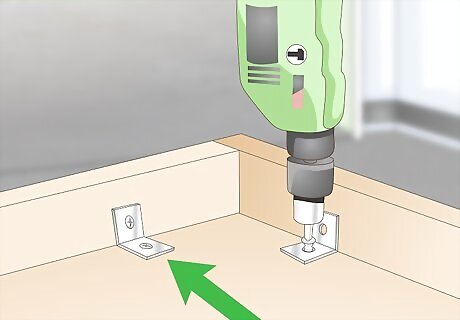
Use angle brackets and wood screws to secure the frame to the tabletop. Place the frame on the bottom of the tabletop so the boards are 1 ⁄2 in (3.8 cm) from each side. Use 2 angle brackets for each board and place them at least 4 in (10 cm) from the inside corners of the frame. Screw them into the frame, then screw the other side of the bracket to the bottom of the table. Use screws less than ⁄4 in (1.9 cm) long so they don't break through the tabletop. If your frame still fits loosely to the tabletop, use another metal bracket in the middle of each board.
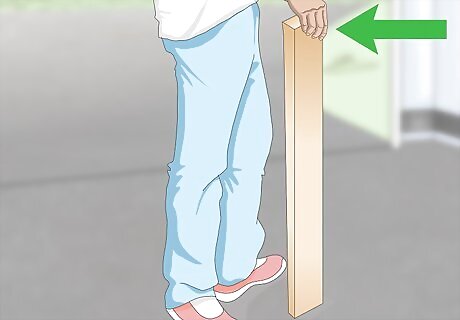
Make the legs with 2 in × 4 in (5.1 cm × 10.2 cm) boards cut to waist height. Measure the distance from the floor to your waist using a tape measure. Once you find the height, make marks on your boards so you know where to saw them. Cut the boards using a table or circular saw and sand the bottoms so they sit flat on the ground. Having the table at waist height allows you to work comfortably without having to reach far. You can also make the table the same height as your current workbenches if you'd prefer.
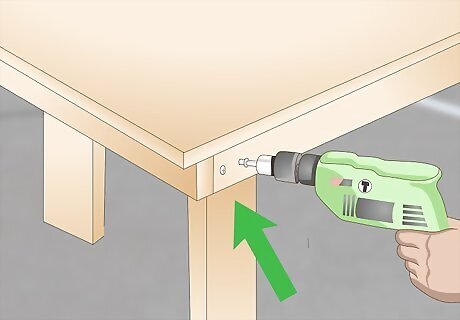
Screw the legs into the support frame at each corner. Place the legs in the inner corners of the support frame you've built. Drill 2 construction screws into each leg to attach the legs to the frame's shortest sides. Once the legs are attached, flip the table over so it's upright. Use wood glue before you put in the screws the legs to have extra security.
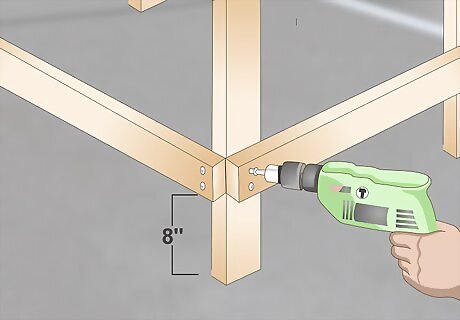
Add cross supports between the legs 8 in (20 cm) from the floor. Measure the distance between the legs of your table and cut pieces of 2 in × 4 in (5.1 cm × 10.2 cm) boards to the same length. Pre-drill the holes through the boards and legs so the wood doesn't split. Attach the supports between each leg with construction screws and a drill so your table is sturdy when you use it. Use a level and clamps to hold the support in place while you screw it in. If your wood cracks, squeeze wood glue into the gap and clamp it tight so it is secure.
Making Space for the Router
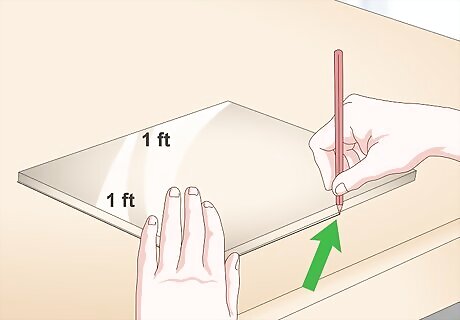
Trace a 1 ft × 1 ft (30 cm × 30 cm) piece of acrylic onto the tabletop. Place the acrylic on top of the table at least 4 in (10 cm) from one of the long sides. Use a pencil to draw a line on the tabletop in the shape of the acrylic. If you want more counter space to hold tools or materials, make the square closer to the front. Otherwise, you can place the hole in the center of the table.
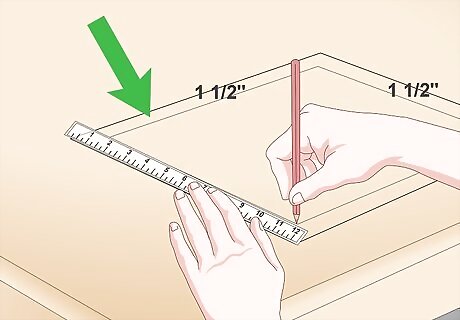
Measure in 1 ⁄2 in (3.8 cm) from each side of the square. Use a tape measure or ruler on each side of the traced square and make marks 1 ⁄2 in (3.8 cm) in from each side. Use a straightedge and a pencil to draw a second square inside the one you already traced. This square is what you'll cut out so your router can fit under the table. Some routers may be different sizes and require a smaller or larger hole. Measure the width of your router to see if you need to make any adjustments.
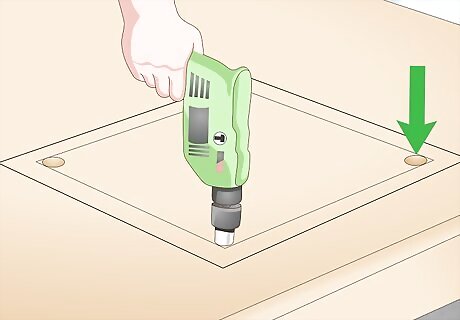
Cut holes in each corner of the smaller square with a 1 in (2.5 cm) hole cutter. Place your drill bit as close to the corner as you can. Turn your drill on and push down with an even pressure so the bit cuts through the tabletop completely. Repeat this for each corner of the smaller square. Cutting the holes in each corner gives you a starting point for when you start sawing and helps relieve some of the pressure when you make your cuts.
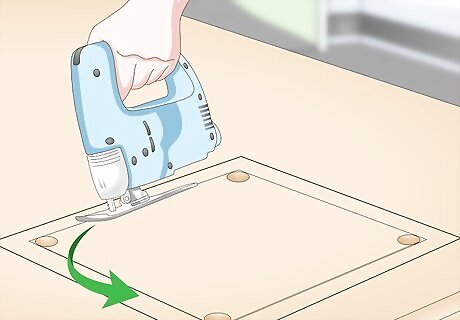
Cut the inner square out with a jigsaw. Place the jigsaw in one of the holes you cut in the corner. Follow the line you drew to one of the other corners. Keep cutting until the square falls out or can easily be removed by hand. Work slowly with your saw so you don't travel outside of the lines.
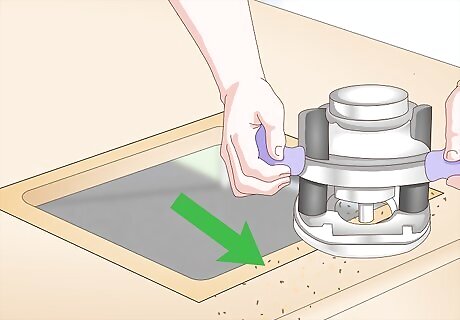
Route the 1 ft × 1 ft (30 cm × 30 cm) section to make a ledge for the acrylic. Use a straight bit in your router and set the thickness on the router to the same thickness as the acrylic sheet. Turn the router on and press it firmly into the tabletop. Slowly work left and right to file away the wood up to the line you've drawn. Make sure not to work past the lines or else the sheet of acrylic will fit loosely. Wear eye protection and a face mask since the router will produce a lot of sawdust. Make guides out of spare 2 in × 4 in (5.1 cm × 10.2 cm) boards and clamps to prevent you from going outside of the edges you've marked.
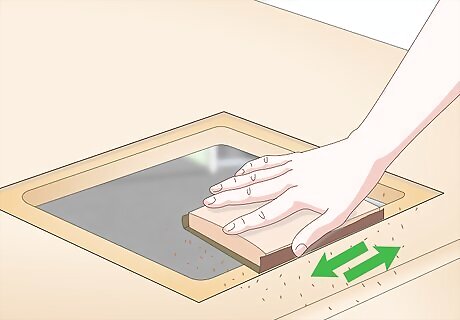
Sand the edges and corners of the square so the acrylic sheet fits. Use a 150 or 240-grit sandpaper to smooth the edges of the routed-out section of tabletop and round the corners of the acrylic sheet. Test how the acrylic fits inside the tabletop and continue to make adjustments as you need them. The router will make curved corners on the tabletop, so you need to round the acrylic so it matches.
Installing the Router
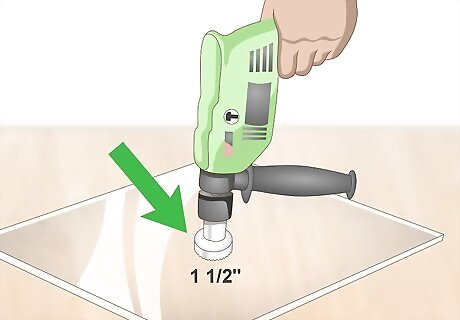
Make a 1 ⁄2 in (3.8 cm) round hole in the center of the acrylic sheet. Use a hole saw attachment for your drill in the center of the acrylic sheet to make your cut. Apply a firm amount of pressure to cut through the acrylic completely. Pull the saw out and sand any rough edges. To find the center of the acrylic, use a dry erase marker and a straightedge to draw lines across the sheet from one corner to the other. Turn the acrylic sheet and make another line between the 2 remaining corners. The center will be where the lines intersect. Wipe the lines clean with a dry cloth.
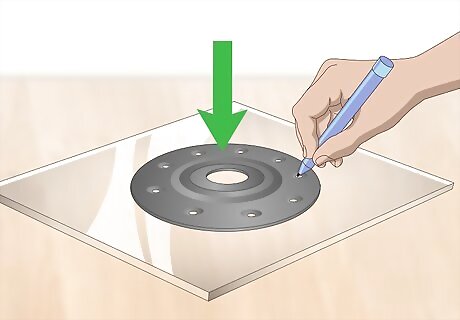
Use the old router plate to mark where the mounting screws should go. Take the plate off of the router and line up the center hole with the one you made in the acrylic. Look for the holes around the plate where you would attach screws and use a marker to make a dot on the acrylic so you know where to make the holes. The holes need to line up or else the router will not properly fit under the table.
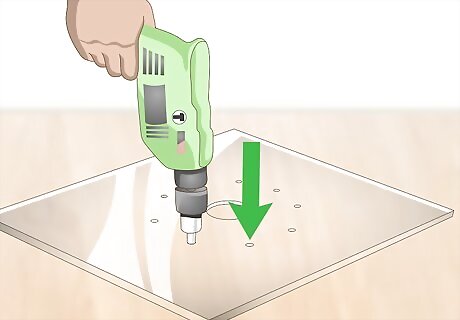
Drill holes into the acrylic for each mounting screw. Use a drill bit that matches the size of the screws to make holes where you've marked the dots. Drill completely through the acrylic with your drill bit so you can easily attach the mounting screws to the router. To make the screws flush with the acrylic, use a drill bit the same diameter as the screw heads. Drill ⁄8 in (0.32 cm) down in the holes you just made.
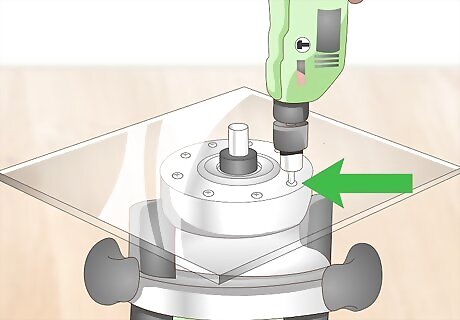
Attach the router to the underside of the acrylic with screws. Set your router upside down and place the sheet of acrylic on top of it. Line up the holes so the center is over the router bit and the mounting holes line up. Use a drill to attach the screws to your router to the acrylic so it holds firmly in place.
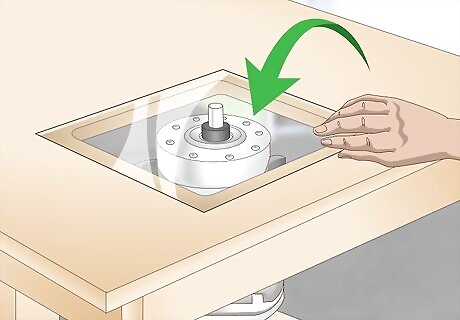
Drop the acrylic and router into the table so it fits flush. Carefully feed the power cord through the hole in the tabletop and set your router inside so the acrylic sheet sits on the ledge. Make sure the acrylic is flush with the tabletop. Once the router and acrylic are in place, you can plug it in and it's ready to use! If you ever need to remove your router, lift it out of the hole and unscrew it from the acrylic sheet.




















Comments
0 comment